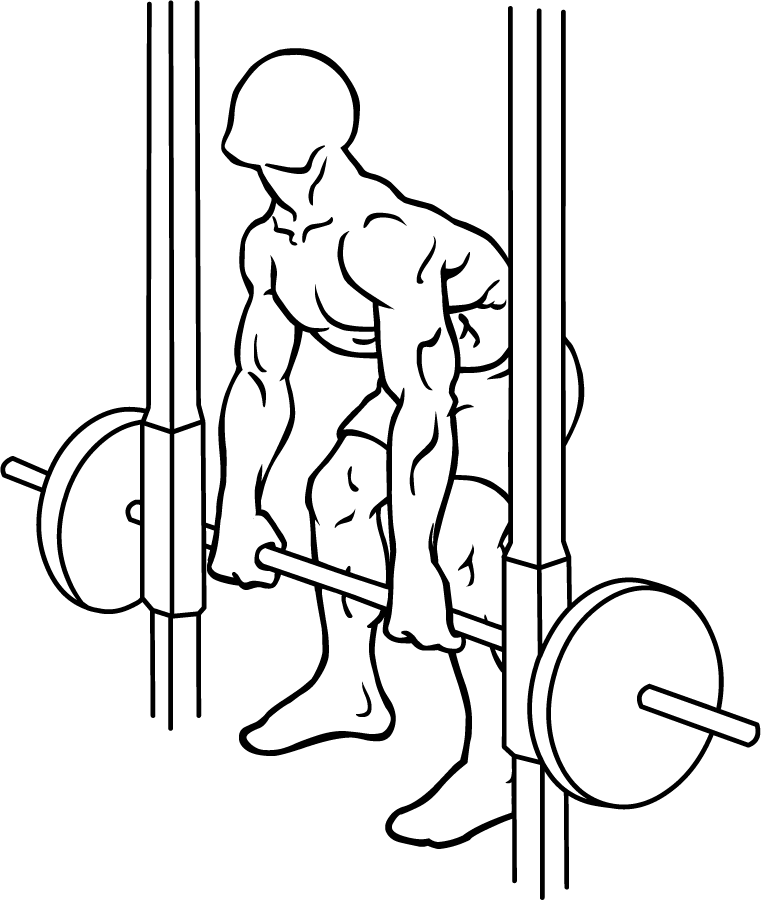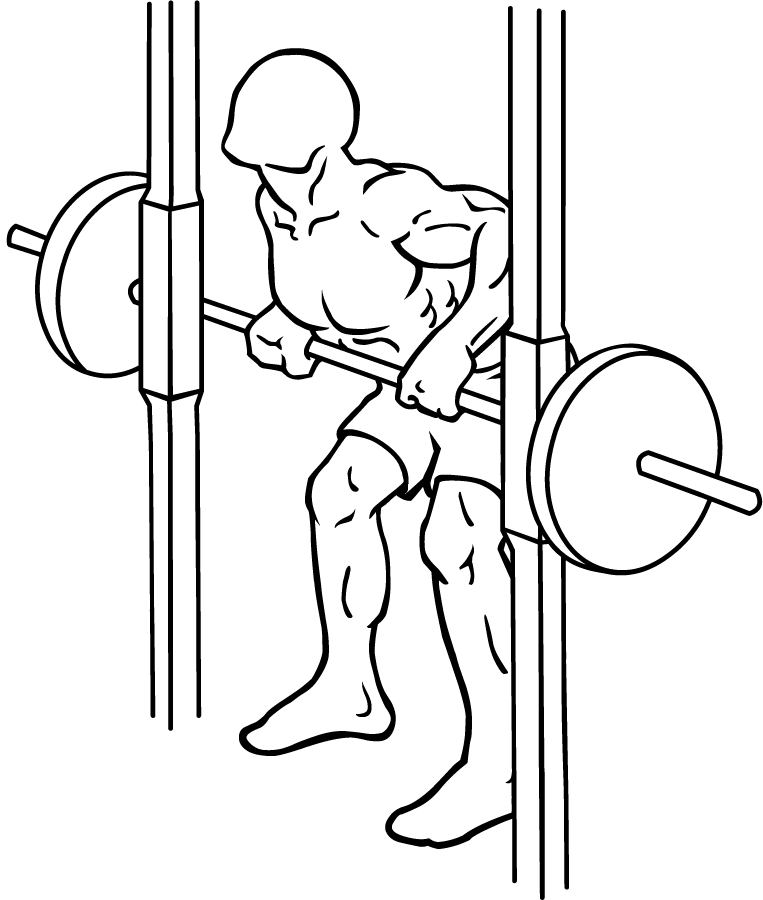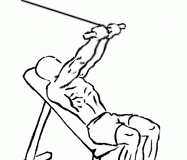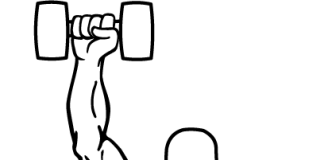Last Updated on September 28, 2014
The Smith Machine Rear Deltoid Row is a powerful exercise that targets the rear deltoids, shoulders, biceps, and upper back, making it a cornerstone for building upper-body strength and improving posture. This compound movement engages multiple muscle groups and is particularly effective for enhancing the definition and strength of the rear shoulder muscles.
In this comprehensive guide, we’ll explore the benefits, step-by-step instructions, common mistakes, variations, and tips for optimizing the Smith Machine Rear Deltoid Row. Whether you’re looking to improve shoulder stability, increase back strength, or add variety to your upper-body workout, this exercise is a must-try.
Why Choose the Smith Machine Rear Deltoid Row?
The Smith Machine Rear Deltoid Row combines the stability of a Smith Machine with a targeted pulling motion, making it an ideal exercise for isolating and strengthening the rear deltoids and upper back. Here’s why it deserves a spot in your routine:
1. Rear Deltoid Activation
This exercise emphasizes the rear deltoid muscles, helping to build balanced and well-rounded shoulders.
2. Improved Upper-Back Strength
It engages the rhomboids, traps, and lats, contributing to a stronger, more defined upper back.
3. Enhanced Posture
Strengthening the rear delts and upper back muscles combats the effects of poor posture, especially for those who spend long hours sitting or hunched over.
4. Added Stability
The fixed path of the Smith Machine provides a controlled environment, reducing the need for balance and ensuring proper form.
5. Great for All Levels
Beginners benefit from the guided motion, while advanced lifters can use heavier weights to challenge their strength.
Muscles Worked
The Smith Machine Rear Deltoid Row is a compound exercise that primarily targets the rear deltoids but also engages supporting muscles:
- Primary Muscles:
- Rear Deltoids (Back of Shoulders)
- Rhomboids (Upper Back)
- Trapezius (Upper and Middle Back)
- Secondary Muscles:
- Biceps (Arms)
- Latissimus Dorsi (Lats)
- Core (for stabilization)
How to Perform the Smith Machine Rear Deltoid Row
Step-by-Step Instructions
Follow these steps to perform the Smith Machine Rear Deltoid Row safely and effectively:
1. Set Up the Bar
- Adjust the bar on the Smith Machine to its lowest setting.
- Add an appropriate amount of weight to the barbell, ensuring it is manageable for your fitness level.
2. Position Yourself
- Stand with your feet shoulder-width apart and a slight bend in your knees.
- Bend at the hips to lower your torso, keeping your back straight and your chest parallel to the floor.
3. Grip the Bar
- Grasp the bar with an overhand grip (palms facing down), slightly wider than shoulder-width.
- Your arms should be straight with a slight bend in the elbows.
4. Engage Your Core
- Tighten your abdominal muscles to stabilize your torso and maintain a neutral spine throughout the movement.
5. Row the Bar
- Pull the bar upward toward the lower part of your chest, bending your elbows and keeping them flared outward.
- Squeeze your shoulder blades together at the top of the movement and hold for a moment.
6. Lower the Bar
- Slowly lower the bar back to the starting position, maintaining control to avoid letting it drop too quickly.
7. Repeat
- Perform the desired number of repetitions, maintaining proper form throughout the set.
Tips for Perfect Form
- Maintain a Neutral Spine
Avoid rounding your back to protect your spine and engage the target muscles effectively. - Elbow Position
Keep your elbows flared outward during the row to emphasize the rear deltoids and upper back. - Controlled Movements
Focus on a slow, controlled motion to maximize muscle engagement and reduce the risk of injury. - Breathing Technique
Inhale as you lower the bar and exhale as you pull it toward your chest. - Avoid Overloading the Bar
Start with lighter weights to master the form and gradually increase the load as your strength improves.
Common Mistakes to Avoid
Even with the stability of the Smith Machine, improper form can limit results or lead to injury. Avoid these common errors:
1. Rounding the Back
- A rounded back shifts the strain onto your lower back, increasing the risk of injury.
- Fix: Keep your back straight and chest up, engaging your core throughout the movement.
2. Using Momentum
- Jerking the bar upward reduces muscle activation and increases the risk of strain.
- Fix: Focus on slow, controlled movements and avoid swinging your body.
3. Elbows Dropping
- Letting your elbows drop below shoulder level shifts the focus away from the rear delts.
- Fix: Keep your elbows elevated and flared outward during the row.
4. Placing Feet Too Far Forward
- Standing too far from the bar can misalign your body, reducing the effectiveness of the exercise.
- Fix: Position your feet directly under the bar for proper alignment.
5. Overloading the Bar
- Lifting heavier than you can control compromises form and increases injury risk.
- Fix: Use manageable weights and prioritize technique over load.
Variations of the Smith Machine Rear Deltoid Row
Incorporating variations can target different muscle groups and add variety to your routine:
1. Reverse-Grip Rear Deltoid Row
- Use an underhand grip (palms facing up) to place more emphasis on the biceps and lats.
2. Single-Arm Rear Deltoid Row
- Perform the exercise with one arm at a time to focus on unilateral strength and correct muscle imbalances.
3. Wide-Grip Rear Deltoid Row
- Use a wider grip to target the rear deltoids and upper traps more intensely.
4. Tempo Training
- Slow down the eccentric (lowering) phase to increase time under tension and maximize muscle growth.
5. Dumbbell Rear Delt Row
- Replace the Smith Machine with dumbbells for a greater range of motion and additional core engagement.
Reps and Sets Recommendations
Your fitness goals determine the ideal number of sets and reps for this exercise:
- For Strength: 3–5 sets of 4–6 reps with heavier weight.
- For Muscle Growth (Hypertrophy): 3–4 sets of 8–12 reps with moderate weight.
- For Endurance: 2–3 sets of 12–15 reps with lighter weight.
Workout Integration
The Smith Machine Rear Deltoid Row can be included in various training splits for maximum effectiveness:
1. Shoulder Day
Pair it with exercises like lateral raises, overhead presses, and face pulls for a complete shoulder workout.
2. Back Day
Combine it with pull-ups, rows, and deadlifts to build a strong and well-defined upper back.
3. Push-Pull Split
Include it in your pull day routine along with biceps curls, lat pulldowns, and bent-over rows.
Benefits Beyond Aesthetics
The Smith Machine Rear Deltoid Row offers several functional benefits:
1. Improved Shoulder Stability
Strengthening the rear delts enhances shoulder stability, reducing the risk of injury during pressing movements.
2. Better Posture
Targeting the upper back and rear delts helps combat the effects of poor posture caused by prolonged sitting.
3. Enhanced Athletic Performance
A stronger upper back and shoulders improve performance in sports that involve pulling or overhead movements.
Safety Considerations
- Warm Up
Perform 5–10 minutes of light cardio and dynamic stretches for your shoulders and back. - Check the Equipment
Ensure the Smith Machine is functioning properly and securely loaded with weights. - Use Proper Footwear
Wear flat, stable shoes to maintain balance and support during the lift. - Listen to Your Body
Stop immediately if you experience pain or discomfort and consult a fitness professional if needed.
FAQs
1. Is the Smith Machine Rear Deltoid Row suitable for beginners?
Yes! The guided motion of the Smith Machine makes it an excellent choice for those new to weightlifting.
2. How often should I perform this exercise?
Include it 1–2 times per week as part of your upper-body or back-focused workouts.
3. Can I substitute this exercise for free-weight rows?
While it’s a great addition to your routine, it’s best used alongside free-weight rows for a balanced approach.
Conclusion
The Smith Machine Rear Deltoid Row is a versatile and effective exercise for building strong, defined shoulders and an impressive upper back. By following proper technique, avoiding common mistakes, and experimenting with variations, you’ll maximize the benefits of this movement and see noticeable improvements in your strength and posture.
Whether you’re a beginner seeking a controlled introduction to rows or an advanced lifter looking to target specific muscles, this exercise is a valuable addition to any workout routine. Start incorporating it today and take your upper-body training to the next level!








